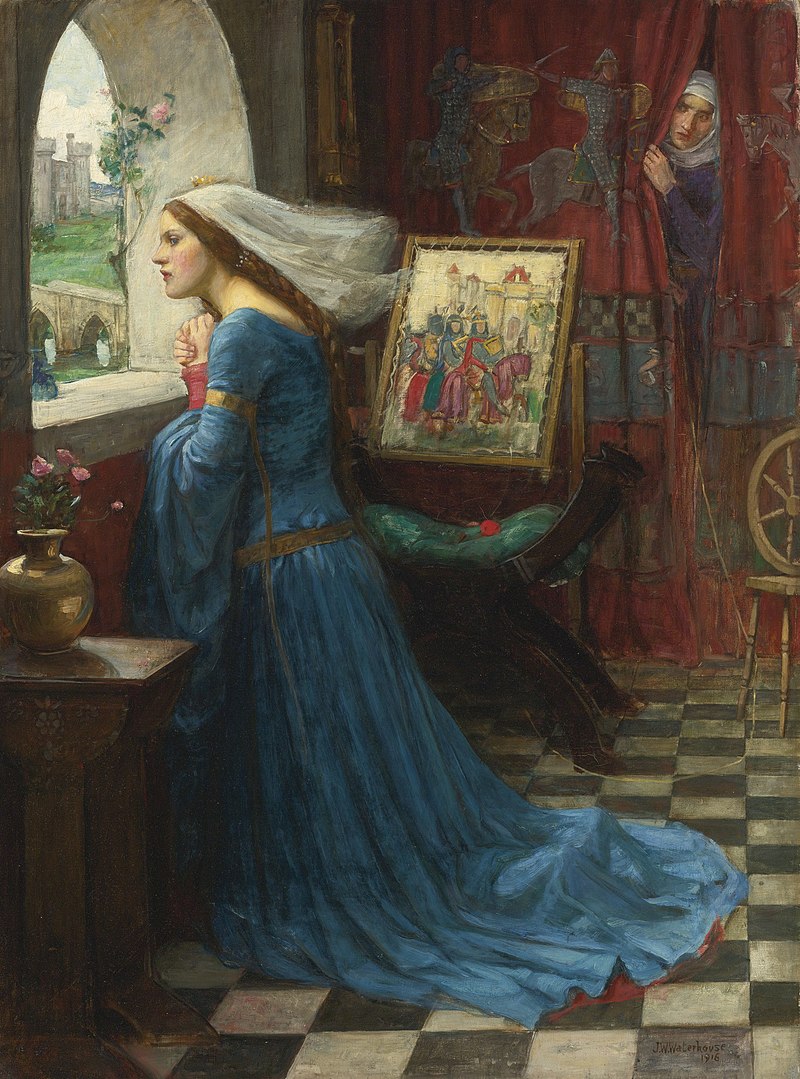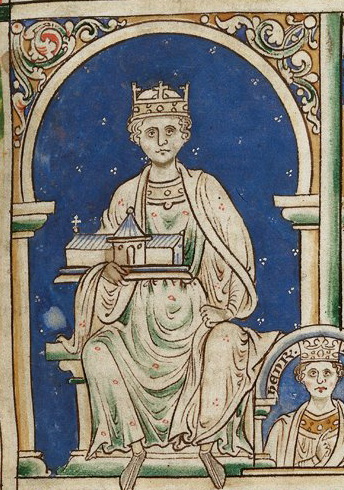by Susan Flantzer
© Unofficial Royalty 2020

Fair Rosamund by John William Waterhouse, 1916; Credit – Wikipedia
Known as “The Fair Rosamund”, Rosamund de Clifford was probably born in Herefordshire, West Midlands, England as that was where her family home Clifford Castle was located. Her birth date is unknown but she was the youngest of her parents’ six children. Rosamund’s father was born Walter Fitz Richard (1113–1190) and he married Margaret de Tosny. Margaret’s father Ralph de Tosny was granted the castle by King William I (the Conquerer) of England in 1075 after it was forfeited by a traitor. After the marriage of Ralph’s daughter, Margaret de Tosny to Walter Fitz Richard, Walter became steward of the castle and later claimed it for himself via his marriage. In 1162, he changed his name to Walter de Clifford and the castle came to be known as Clifford Castle.
There is incomplete and conflicting genealogical information but Rosamund probably had five siblings:
- Gilbert de Clifford
- Richard de Clifford
- Amicia de Clifford, married (1) Osbern Fitz Hugh of Richard’s Castle (2) Bartholomew de Mortimer
- Lucy de Clifford, married Hugh de Say of Stokesay
- Walter de Clifford (died 1221) married Agnes de Cuni, had four children

Ruins of Clifford Castle; Credit – By Humphrey Bolton, CC BY-SA 2.0, https://commons.wikimedia.org/w/index.php?curid=4097700
Rosamund grew up at Clifford Castle before going to Godstow Abbey near Oxford, England to be educated by the nuns. Likely Rosamund first met King Henry II of England in 1163 when he was staying at Clifford Castle during the military campaign against the Welsh ruler Rhys ap Gruffudd. In 1166, Rosamund and Henry II began their affair. However, until 1174, almost no one knew about Rosamund’s relationship with Henry II.

Woodstock Palace; Credit – Wikipedia
Henry had Rosamund housed at Woodstock Palace, a royal residence near Oxford, England. Woodstock Palace was mostly destroyed during the English Civil War. In the early 1700s, Blenheim Palace, the principal residence of the Dukes of Marlborough, was built on the site, and stones from Woodstock Palace were used in its construction.

Henry II, King of England; Credit – Wikipedia
In 1174, the relationship between Henry II and Rosamund became public. Eleanor, Duchess of Aquitaine, Queen of England, Henry II’s wife had joined the uprising of their sons against her husband. Henry II eventually defeated the revolt and had Eleanor comfortably imprisoned for her part in inciting their sons. From that moment, Henry II began to live openly with Rosamund. Henry II had many mistresses and had treated earlier affairs discreetly, but he flaunted Rosamund. He may have done so to provoke Eleanor into seeking an annulment, but if so, Eleanor disappointed him as did the Pope who refused to consider a divorce. Nevertheless, rumors persisted, perhaps encouraged by Henry’s supporters, that Eleanor had Rosamund poisoned. In 1176, Rosamund became seriously ill and retired to Godstow Abbey near Oxford, where she died in the same year.

Godstow Abbey ruins; By Chris Gunns, CC BY-SA 2.0, https://commons.wikimedia.org/w/index.php?curid=14569666
Rosamund was buried at Godstow Abbey. King Henry II paid for her tomb in the choir of the abbey church and gave an endowment for the tomb to be tended by the nuns. Rosamund’s tomb became a popular local shrine until 1191, two years after Henry II’s death. Hugh of Lincoln, Bishop of Lincoln, while visiting Godstow Abbey, noticed Rosamund’s tomb right in front of the high altar. The tomb was covered with flowers and candles, evidence that the local people were praying there. Calling Rosamund a harlot, the bishop ordered her remains removed from the church. Her tomb was moved to the cemetery next to the nuns’ chapter house. Local people still prayed at Rosamund’s tomb but it was destroyed during the Dissolution of the Monasteries in the reign of King Henry VIII.
This article is the intellectual property of Unofficial Royalty and is NOT TO BE COPIED, EDITED, OR POSTED IN ANY FORM ON ANOTHER WEBSITE under any circumstances. It is permissible to use a link that directs to Unofficial Royalty.
Works Cited
- Barber, Richard, 1964. Henry Plantagent 1133-1189. New York: Barnes and Noble.
- En.wikipedia.org. 2020. Godstow. [online] Available at: <https://en.wikipedia.org/wiki/Godstow#History_of_Godstow_Abbey> [Accessed 22 July 2020].
- En.wikipedia.org. 2020. Rosamund Clifford. [online] Available at: <https://en.wikipedia.org/wiki/Rosamund_Clifford> [Accessed 22 July 2020].
- En.wikipedia.org. 2020. Walter De Clifford (Died 1190). [online] Available at: <https://en.wikipedia.org/wiki/Walter_de_Clifford_(died_1190)> [Accessed 22 July 2020].
- Flantzer, Susan, 2016. King Henry II Of England. [online] Unofficial Royalty. Available at: <https://www.unofficialroyalty.com/king-henry-ii-of-england/> [Accessed 22 July 2020].
- Ru.wikipedia.org. 2020. Клиффорд, Розамунда. [online] Available at: <https://ru.wikipedia.org/wiki/%D0%9A%D0%BB%D0%B8%D1%84%D1%84%D0%BE%D1%80%D0%B4,_%D0%A0%D0%BE%D0%B7%D0%B0%D0%BC%D1%83%D0%BD%D0%B4%D0%B0> [Accessed 22 July 2020].
- Thepeerage.com. 2020. Walter Fitz Richard Fitz Pons. [online] Available at: <http://www.thepeerage.com/p10486.htm#i104860> [Accessed 22 July 2020].
